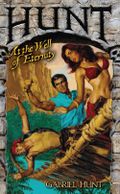Today, Variety is taking potshots at the industry bloggers who, over the last year or two, have made the daily trade magazine irrelevant and, worse, revealed how beholden it is to the studios and networks it fails to objectively cover.
Sadly, all Variety is showing with their pitiful whining, and their desperate plea to still be taken seriously, is how right the bloggers are. They are particularly bitter about how Nikki Finke's
Deadline Hollywood Daily frequently breaks stories that Variety either didn't notice, failed to cover, got wrong, or completely hushed-up. Variety is trying to make the case that bloggers are reckless and mean, Finke in particular.
Cynthia Littleton reports about one dust-up as an example:
Nothing is too minor or petty to spark a verbal fusillade. And next to bashing their own kind, there's nothing Web newsies likes better than hammering the veracity and integrity of the traditional media. Variety has certainly found itself in the crosshairs, as have the Los Angeles Times and New York Times, among others.
On March 11, Finke posted an item saying Summit Entertainment was eyeing Juan Antonio Bayona to direct "Eclipse," the third installment of its "Twilight" vampire pics.Variety got an off the record confirmation of the deal, and reported it in a story that ran only online.
March 12: Goldstein, in the L.A. Times' Big Picture blog, debunked the Bayona hiring. Goldstein quoted his lunch partner of that day, Summit president of production Erik Feig, as denying that anyone had been hired to direct "Eclipse."
Goldstein's post took Finke and Variety to task, alleging the stories ran without getting confirmation the story.
Finke's response to Goldstein was swift, even demanding an apology from Feig. Shortly before 10 p.m. that night, her update featured Feig claiming to have been misquoted by Goldstein, at least according to Finke.
March 13: Goldstein responds with a post saying that he and Feig had been "bludgeoned" by Finke, and he even linked to another blogger's take on the Finke vs. Goldstein spat.
March 15: Goldstein added a "Sunday update" that quoted Feig giving a mea culpa to Finke, after which Goldstein took yet another swipe at Variety for supposed journalistic recklessness.
So, in other words, Finke was right, the LA Times was wrong. So what point, exactly, was Variety trying to make?
In another Variety story, Michael Fleming recounts this anecdote:
A little over a year ago, I found out Brad Pitt might fall out of Universal's "State of Play." The studio's toppers argued that a Variety story would cement his exit. They asked for a couple of days to let it play out, a request that seemed reasonable. Days later, Variety.com broke Pitt's exit. (Later that day, Deadline Hollywood Daily wrote about my sitting on the story and cited it as proof Variety was in the pockets of the studios.)
In other words, Finke was right. Fleming sat on the story because the studio asked him to. He put their business/PR interests above his responsibility to report news. He cow-towed to an advertiser. The only point Fleming is making here is how compromised Variety's reporting has truly become (which was obvious to anyone who read the trades during the Writers Strike).
I think the Daily Beast sums it up best:
This weekend, Variety launched an extraordinary three-part attack that was ostensibly aimed at blogging in general but clearly was aimed at one influential online journalist in particular.[…]Thanks in part to a loyal cadre of sources and to the enormous vacuum she filled during the writers’ strike, Finke’s column has become a must-read in Hollywood. And clearly, Variety’s Bart cannot take it anymore.[…]The fact is Variety—like the Los Angeles Times (which has also taken an increasing number of shots at Finke lately)—too often lags behind the news. How is it possible, to pick just two easy examples, that both well-staffed institutions missed the Silverman-to-NBC story and the Chernin-is-out story? Perhaps, as they claim, they’re handicapped by their desire to verify information before slapping it up on the web. But maintaining a high journalistic standard hardly explains the type of anemic coverage too-often found, or not found, on the pages of either Variety or the Times. Bart’s attack—indeed the whole whiny Variety package—sounds too much like the enraged cry of an old-media dinosaur trying to defend what’s left of its terrain.
(Hat-tip to Denis McGrath for leading me to the Daily Beast post)
UPDATE: Nikki Finke is reporting today that Daily Variety's publisher Neil Stiles made overtures to buy her out on February 27 and bring her into their fold. The deal didn't happen.
Stiles admitted that his company had done a survey only to find that DHD was a bigger showbiz destination site on the Internet than Variety. He also noted that Variety was embarrassed when the trade publication missed the Peter-Chernin-resigning-from-News Corp story which I had broken a few days earlier. (It took Variety several hours to get online with a matching story…) Stiles' idea was that I would remain independent, but Variety would own DHD and link to my scoops, etc.[…]
She reports that Bart wasn't consulted about the offer and was furious when he found out, immediately ordering not one, but three articles trashing her. How embarrassing…for Variety.



